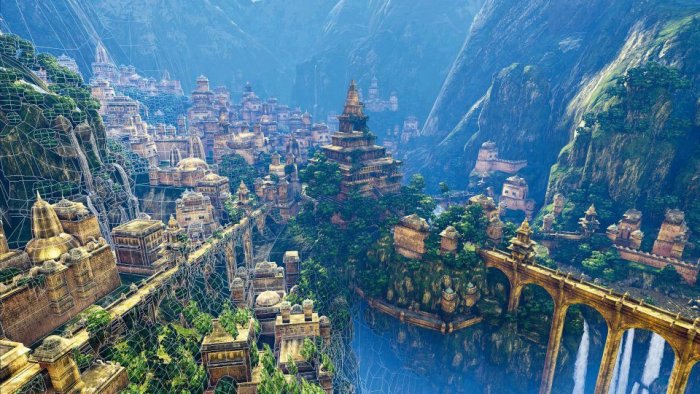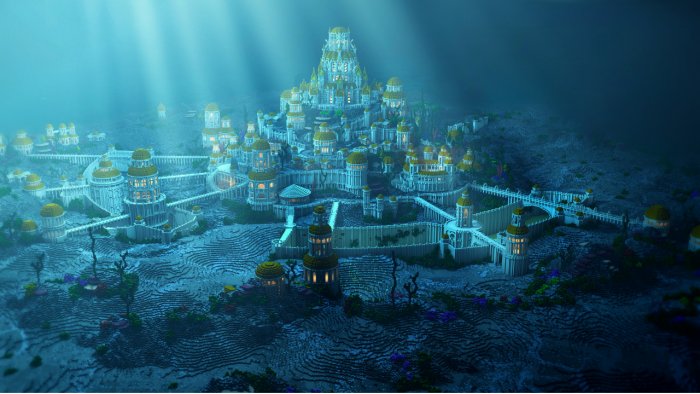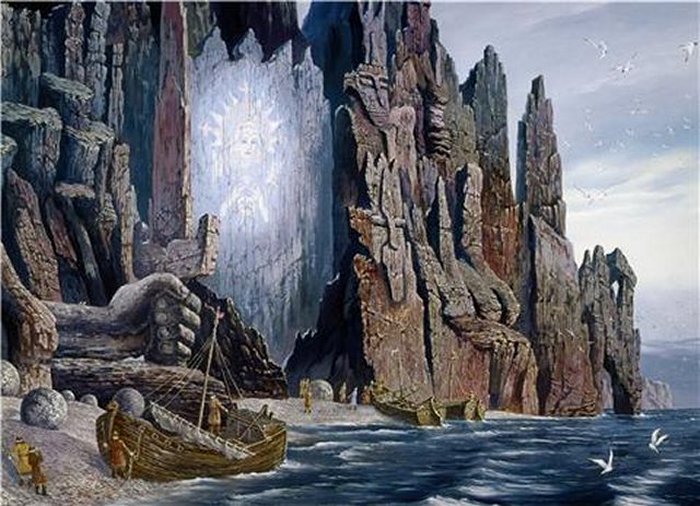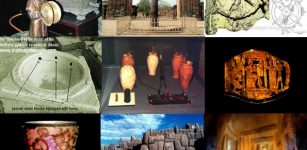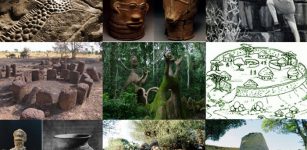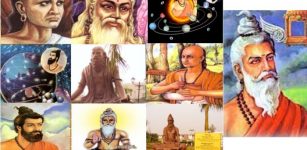5 Fascinating Sacred And Lost Places In Myths And Legends
MessageToEagle.com – We live now in a highly technologically advanced world, but this world is surrounded by many mysteries lost in the distant past.
There are places we can only imagine because we have never seen them.
Some of them are sunken, others had their locations at power vortices. Unfortunately, we know very little about the builders of these remarkable and enigmatic places. Legends and myths, sometimes ancient carvings are our only legacy from these ancient places.
1. Shambhala: Mysterious Land In Tibet
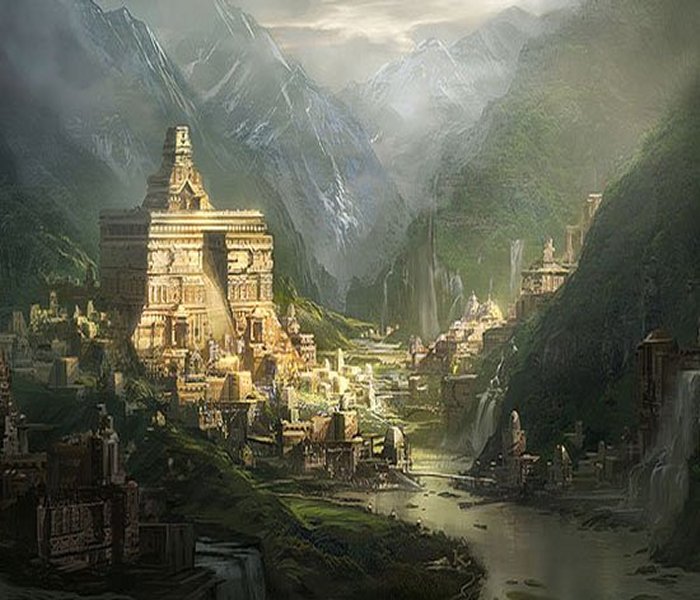
We begin our journey and our first destination is Shambhala.
According to legend, this place is called “a northern place of quietude”, and a source of a system of esoteric wisdom called Kalachakra”.
Some Indian sects believe that there is a region north of the Himalayas called Kapapa, where “perfect men” reside.
Shambhala itself is supposed to be a land in or just north of Tibet, where many travellers have heard of the tradition from holy men:
“In the midst of high mountains there are unsuspected enclosed valleys. Many hot springs nourish the rich vegetation. Many rare plants and medicinal herbs are able to flourish on this unusual volcanic soil.
Shambhala, the land safeguarding the Kalachakra teachings is difficult to find. Who may know the labyrinths of these mountains? A Himalayan explorer, Nicholas Roerich (1874-1947) was one of those who believed in existence of Shambhala. Many others did the same and even tried to reach Shambala.
Some of them disappeared forever and never found this fabulous kingdom whose reality is visionary or spiritual as much as physical or geographic.
2. Lemuria: The Motherland Of Mankind
“Lemuria” is the name of a legendary lost island that was located in the Indian and Pacific Ocean. The sacred island can be imagined as a triangular-shaped piece of land. In its center was Australia, its baseline was faced towards Antarctica, and the two other sides were parallel with the east coast of Africa and the west coast of South America.
Unlike Atlantis, some believe that it was not a flood, but rather volcanic eruptions and subterranean fires, which caused the end of the fabled island of Lemuria.
The tradition also tells us that some of the Lemurian tribes escaped the cataclysm.
Lemuria is also often referred to as “Mu”. The best known account about the mysterious Mu was presented by Colonel James Churchward, who devoted 50 years of his life trying to reveal the island’s and ancient man’s true history.
3. El Dorado: The Mythical Golden City
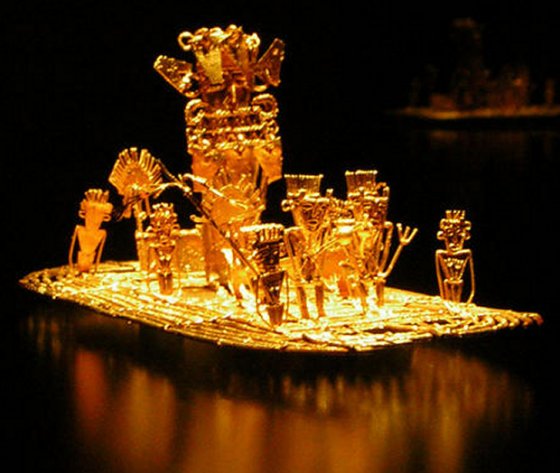
El Dorado (“The Golden One”) has its origin in present-day Equador. It’s a mythical city of immeasurable gold riches and as many believe, located somewhere in South America.
This wonder city of gold has never been found. It does not mean it does not exist. However to find something in the jungles and mountains of South America is not easy.
From the middle of the 16th century a series of adventurers along with the conquistadors, searched for El Dorado. Early explorers to central and southern America found legends of gold and discovered hundreds of golden figurines inspiring them to further search.
They met local Indians who had abundant ornaments made of gold and even the cooking utensils were made of gold. All of them said the gold came from a people further in the interior with whom they traded.
Through the centuries, many expeditions were organized, many gold seekers vanished never coming back. Many fateful expeditions were first and last.
It would be surprising if the remains of a mythical golden city lying buried in the deep jungles of central and south America did not one day come to light. In 1969, in a cave near an old Muisca settlement, a 7-inch (18cm) long golden raft was discovered. It’s called the “gold raft of El Dorado” (image above) and until today “The Muisca Raft” is considered the symbol of El Dorado.
4. Atlantis: Legendary Metropolis Destroyed Thousands Of Years Ago
According to the Greek philosopher Plato (427-347 BC), some 12,000 years ago a rich and highly technologically advanced civilization lay to the west of the Pillars of Heracles – today, the Straits of Gibraltar. The entire civilization disappeared under the sea, along with the continent on which it stood.
Although Plato’s story has no known ancient historical source, and although it was strongly criticized from the very beginning, the story of Atlantis is one of the most famous and controversial myths in the world. Throughout the centuries there were many advocates who were convinced that Atlantis had really existed.
Descriptions of the lost culture of superiors do vary considerably but all of them confirm that paradise-like conditions with a marvel of architecture and engineering, reigned on Atlantis and their inhabitants had superhuman characteristics. Many different locations of the fabled lost civilization of Atlantis have been proposed but none have been proven positively to be the historical Atlantis.
5. Hyperborea: The Mysterious Land Beyond The North
Little is known about the mysterious continent referred to by the ancient Greeks as “Hyperborean”.
The Greeks tell of a people called the Hyperboreans who live “beyond the north wind”. It is said that the Greek sun god, Apollo traveled to Hyperborean each year. Apollo loved to visit the far-away country, where the sun never set for six months. It is assumed that the Hyperborean continent was located in the northern regions of our globe.
There are also ancient stories among the people of Scandinavia and Germany referring to a vanished continent called “Thule”, in the North Atlantic Ocean.
It stretched into the present northern polar ice cap, and is now buried beneath miles of ice. Ancient writers described the Hyperboreans, who inhabited Thule as a tall, blonde-haired, and blue-eyed race. They were aging slowly.
These people were peaceful and coexisted in harmony with nature and animals. Before Thule was destroyed, it was a warm and a green place.
First version of this article was originally published on April 3, 2014
Copyright @ MessageToEagle.com. All rights reserved. This material may not be published, broadcast, rewritten or redistributed in whole or part without the express written permission of MessageToEagle.com

